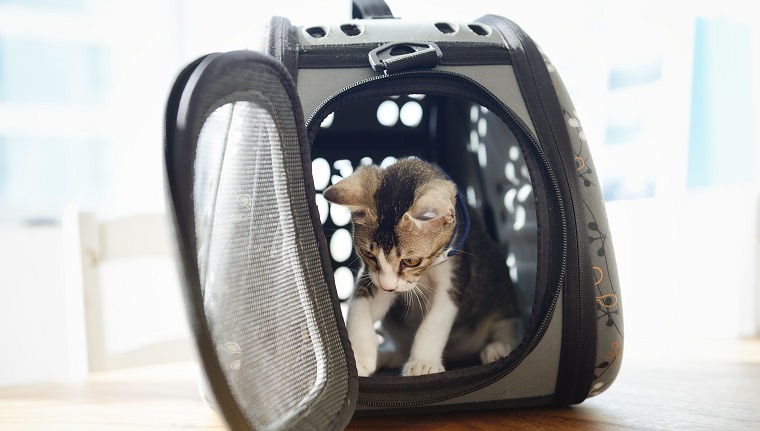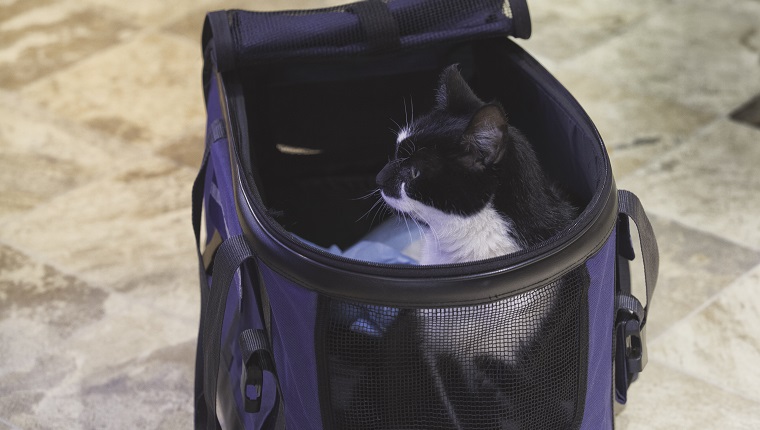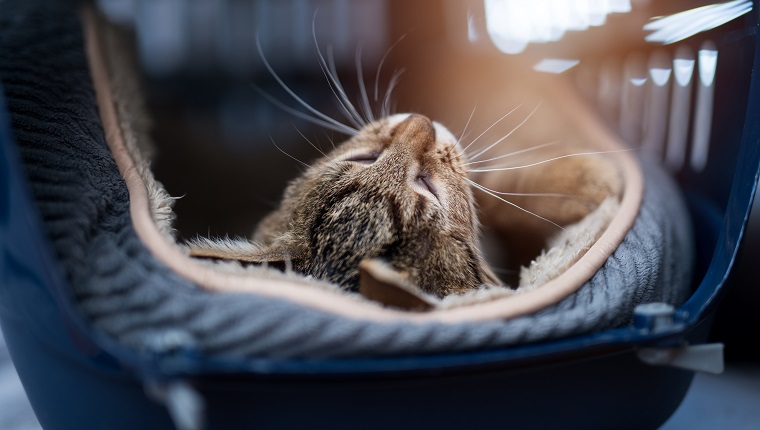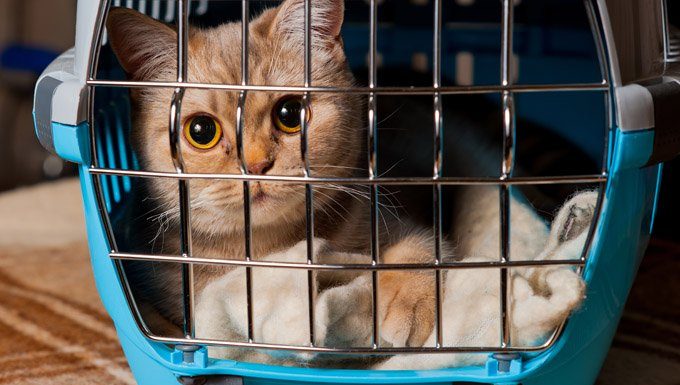Some cats make such a fuss about being in cat carriers that their humans let them roam freely in the car while traveling to the veterinarian. While this may seem like the most humane solution, it actually puts you and your cat in danger.
Even a minor fender-bender can toss a seven-pound cat around quite around quite a bit — not to mention what would happen if your curious kitty were to wedge themselves under the brake pedal.
A cat carrier is a must-have if you’re planning to travel anywhere by car with your cat. Here are a few things you can do to choose the best cat carrier possible.
Cat Carrier Size Matters
Size is one of the most important factors to consider when you’re choosing a new cat carrier. In this case, bigger isn’t always better.
If your cat’s carrier is too small, your pet will feel cramped and uncomfortable, which can exaggerate the already stressful experience of traveling. On the other hand, choosing a carrier that is too large can cause your cat to slide around and feel unsafe.
So how do you know what the correct size is? According to experts, an appropriately sized carrier is 1.5 times the size of your cat. This should give your cat enough room to stretch but not enough to get knocked around.
Choose The Right Material

When you’re searching for a carrier, you’ll notice many different types of soft and hard options. For many cats, the material won’t matter much.
However, you may want to choose a hard plastic carrier if your cat is prone to scratching when anxious. Otherwise you may find yourself replacing a shredded soft carrier more than necessary.
If you choose a hard carrier, be sure to line the bottom with a soft layer so your cat will be comfortable.
Buckle Up
Many carriers these days come adorned with loops that will allow you to secure them with a seat-belt in the back seat of your car. Your cat will be much safer if they’re secured.
This isn’t just for your cat’s safety, but yours, as well. An unsecured cat carrier can quickly become a projectile in the event of an accident and hurt others in the vehicle.
Make sure you can secure the cat carrier you choose in the car if you intend to use it for travel.
Consider A Top Loader

Many people find that its easier to load a cat into a carrier if they can use a door on the top of the carrier rather than in the front.
If your cat isn’t prone to flailing, you may do just fine without this feature. It’s more a matter of preference. However, it’s just another factor you may want to consider.
If you have a lot of trouble getting your cat into your current carrier, there are plenty of other options that might make it easier on you. However, you can take a lot of steps to make your cat’s carrier more comfortable, and that can go a long way in reducing stress when it’s time to go for a car ride.
Make Your Cat’s Carrier Comfortable
Making your cat’s carrier comfortable will help them feel safe during your car ride and may make it easier to get them into the carrier in the first place.
There are a few things you can do to make your cat’s carrier more comfortable and alluring:
- Since cats use their facial pheromones to mark things that they have deemed safe and secure, spritzing a synthetic feline facial pheromone such as Feliway
into the carrier 15 minutes before scooting them inside can give them some comfort.
- Leaving the carrier out when its not in use will make it a familiar object in your cat’s daily life. Instead of hiding it in a closet, leave it somewhere accessible so they’ll be able to smell it, explore it, and mark it with their happy facial pheromones.
- Giving your cat treats
when they’re rubbing against the carrier, showing curiosity towards it, or voluntarily entering it will help them associate the experience with a happy time.
Of course, whether of not your cat is comfortable in the carrier depends a lot on the carrier itself. Cats are sensitive and finicky creatures, and choosing the right carrier can make a huge difference in how your cat reacts to it.
Consider Your Cat’s Individual Needs

Unfortunately, there isn’t one type of carrier that is “the best” for every cat. Each cat will have their own quirks and preferences, and only you will be able to determine what may work best for your specific situation and cat.
Some cats have medical conditions or injuries that may make certain carriers uncomfortable. It’s best to ask your veterinarian for some advice if this is the case for your kitty.
Let your knowledge about your individual cat, along with these suggestions, guide you towards a conscious and informed decision about the type of carrier that will work best for them.
Does your cat have a great cat carrier? What type do they prefer? Let us know in the comments below!
Click the bold links in the article to shop for your cat and support our content!









